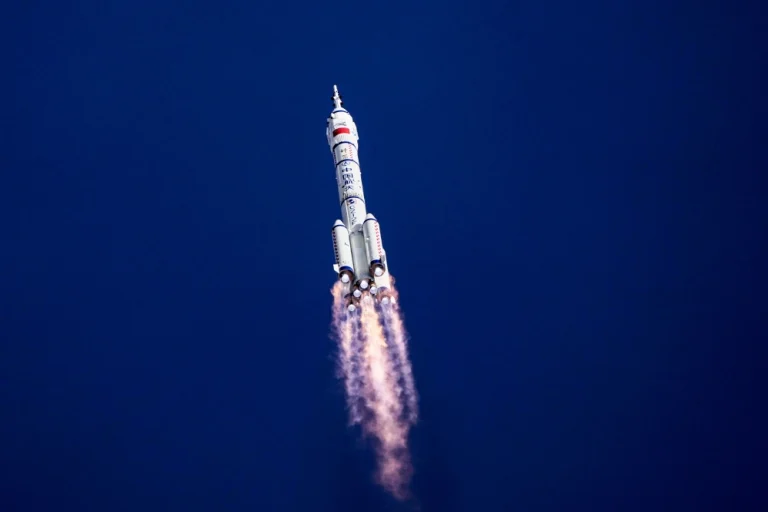China has successfully launched three astronauts into orbit to replace the current crew aboard the Tiangong space station, further advancing its ambitious plans for a crewed lunar mission and eventual Mars exploration.
The Shenzhou 20 spacecraft lifted off at 5:17 p.m. local time (0917 GMT) from the Jiuquan Satellite Launch Center, located on the edge of the Gobi Desert in northwestern China. Propelled by the reliable Long March 2F rocket, the spacecraft is expected to dock with Tiangong approximately 6.5 hours after launch.
This mission underscores China’s growing presence in space. Built entirely without international collaboration—due in part to U.S. national security restrictions barring China from participation in the International Space Station—the Tiangong, or “Heavenly Palace,” has become a symbol of China’s independent space capabilities. The station, now composed of three modules, is equipped with robotic arms that have sparked concerns in some quarters about potential military applications, including the ability to interfere with other satellites in orbit.
Managed by the People’s Liberation Army, China’s space program is a strategic priority for the ruling Communist Party, reflecting both technological prowess and geopolitical ambition.

Since launching its first astronaut into space in 2003—becoming only the third nation to achieve human spaceflight—China’s space program has made consistent progress. It has landed a rover on Mars, explored the moon’s far side, and is now aiming to land astronauts on the moon by 2030.
The Shenzhou 20 mission, named after the “Celestial Vessel,” is led by veteran astronaut Chen Dong, who is embarking on his third journey into space. He is joined by first-time space travelers: fighter pilot Chen Zhongrui and engineer Wang Jie. This all-male crew will take over from the current team aboard the Tiangong space station and remain in orbit for approximately six months.
The spacecraft is scheduled to launch atop China’s reliable Long March 2F rocket at 5:17 p.m. local time (0917 GMT), with docking expected about 6.5 hours later.
The outgoing crew, who arrived at Tiangong in October and have spent 175 days in space, will return to Earth on April 29 following a brief handover period. Tiangong, which was fully assembled in October 2022, is capable of supporting up to six astronauts simultaneously.
During their mission, the new crew will conduct experiments in medical science and advanced technologies, as well as perform spacewalks for station maintenance and equipment upgrades, according to the China Manned Space Agency.

